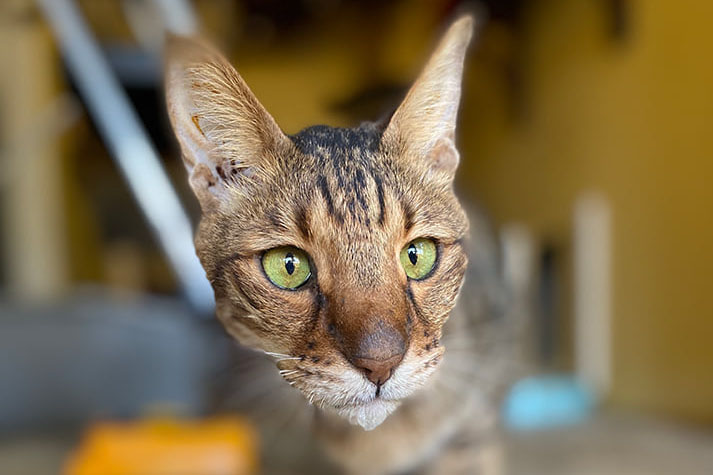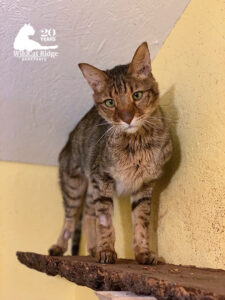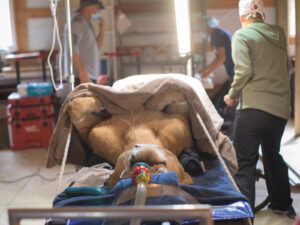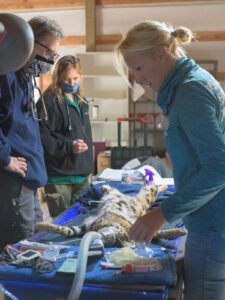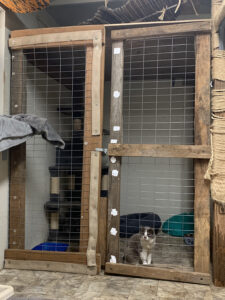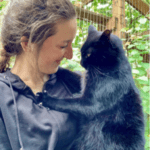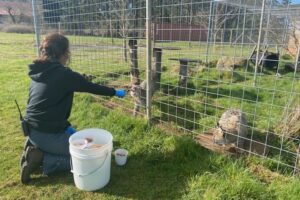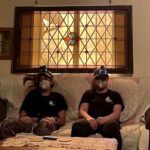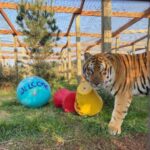Enrichment: Keeping the cats exercised and entertained
The Keeper Journal
Have you ever visited a zoo or sanctuary and seen an item in the animal pen that most certainly does not exist in their wild natural habitat? Like a huge plastic ball in the tiger’s pool or blankets in the orangutan’s nest or fruit strung from the ceiling of the bat cage? Whether you realized it or not, what you were seeing is enrichment, and it’s an important piece of our work at the sanctuary.
What is enrichment?
Untamed Science offers a spot-on definition of animal enrichment as, “the process of providing captive animals with some form of stimulation in order to encourage natural behaviors, which helps to improve or maintain their physical and mental health. In a very simple sense, it is giving the animals something to do so that they are happy and healthy.”
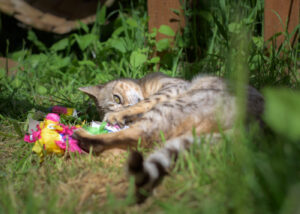
While we do wish that all animals could roam wild and free and thrive in their natural environment, so many factors prevent this from happening. In fact, an FAQ we often receive is, “Will they be released to the wild?” And as much as we’d love to give all our cats thousands of miles to explore in their native lands, the mere fact that most of them were born in captivity and raised in homes or poor conditions prevents them from ever being released. After all, their mothers didn't even have the chance to teach them how to hunt for their own food. Knowing this, it’s easier to understand why they stay at WildCat Ridge.
And this is why enrichment is so important. Enrichment gives our cats the chance to play and discover, tap into natural instincts and regularly experience something new and stimulating in their environment.
How do we do enrichment?
Enrichment varies from species to species, geared towards environmental enrichment, that is, changing something in their enclosure to stimulate their senses, or more focused on behavioral enrichment, where we hope to see a display of natural behaviors by engaging with enrichment. We also gear our enrichment ideas towards the preferences of the cats – for example, Sassy adores her tunnels and the hybrids can’t get enough of a good box.
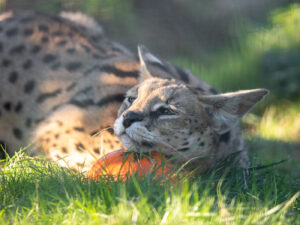
In the barn where we keep all our supplies stored, we keep two shelves designated for enrichment. The small cat shelf has items like cat scratch boards, lots of catnip, feather and fleece wands, catnip filled toys, boxes and puzzle feeders. These enrichment tools are much more appropriate for our domestics and hybrids, as well as some options being reserved for the servals and bobcats.
On the other shelf, we keep all our heavy duty items, like jolly eggs and firehose balls, made to withstand the power behind the jaws of our big guys a little bit more. And by little, I mean they still manage to drag around multiple gallon buckets in their teeth with ease. We work our own creative minds as well, utilizing items like lawn bags and giant boxes to hide snacks or scents. Noni especially likes nothing more than ripping into a lawn bag to discover treats inside.
We also keep lots of scents on hand as wildcats are incredibly stimulated by their noses. Calvin and Hobbes love it when we sprinkle their deck with cinnamon and coffee grounds, Ariel insists on scent marking whenever we spray a particular tropical perfume in her enclosure and an old cat scratcher can have new life for the domestics if you add a little catnip to the cardboard.
Our job is to enrich their lives
Being put in charge of the welfare of the WCR cats is no small undertaking, and we keepers do everything we can to keep them physically and mentally healthy. With creative enrichment ideas, we hope to keep our cats engaged, entertained and able to exhibit their amazing natural abilities.
If you’d like to help us care for our animals through enrichment, consider checking out WildCat Ridge's Amazon Wish List or Chewy Wish List. From time to time you’ll see new ideas for enrichment pop up, and all of us, from staff to cats, are thrilled and grateful when new toys or exciting puzzle feeders arrive.

